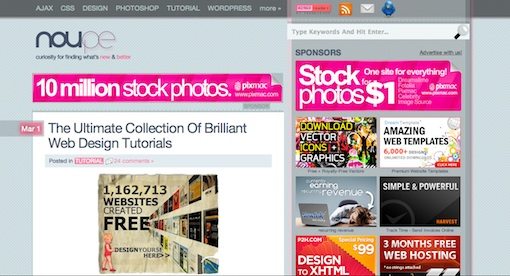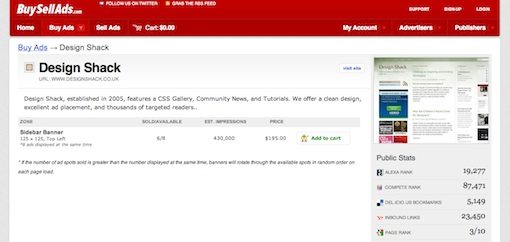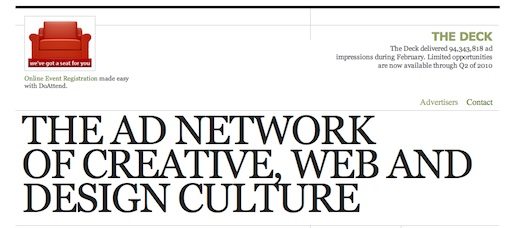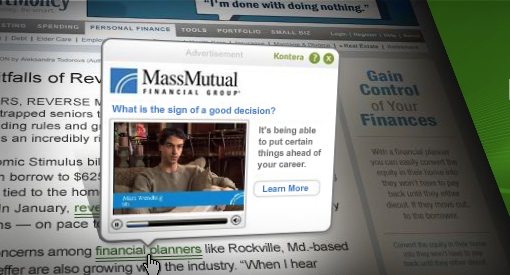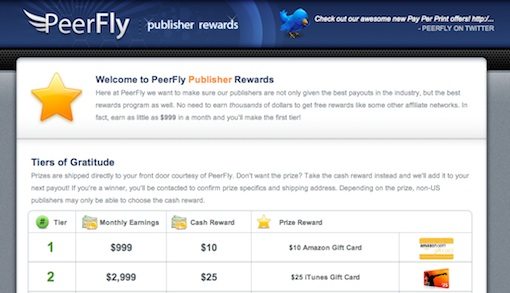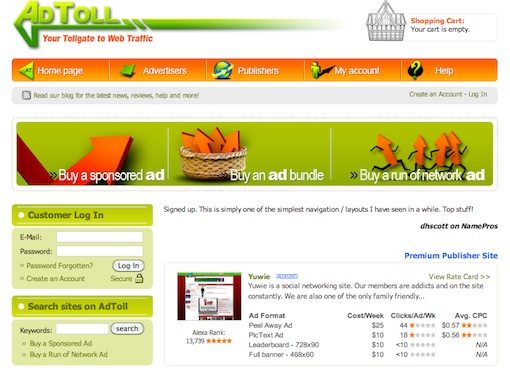How and When to Integrate Ads Into Your Site
Due to the success stories of mega blogs like Smashing Magazine, the professional blogging world has really exploded in recent years. There is a thriving network of free content online spanning nearly every hobby or profession you can imagine. Driving virtually all of these sites (or at least those focused on profitability) is one thing: ad revenue. Consistent and rewarding ad revenue is the holy grail among the blogging world.
Knowing when and how to integrate ads into your site can be quite difficult. Today we’ll look at some tips to help you know if the time is right for you to jump into the world of advertising and what your options are for doing so.
The Ultimate Designer Toolkit: 2 Million+ Assets
Envato Elements gives you unlimited access to 2 million+ pro design resources, themes, templates, photos, graphics and more. Everything you'll ever need in your design resource toolkit.
When Should You Integrate Ads Into Your Site?
Endless waves of entrepreneurial hopefuls create websites every year in hopes of tapping into the gold rush of ad-based revenue. However, many (most I would venture) of these sites ultimately fail to produce significantly profitable results. One of the primary reasons for the high failure rate is a complete misunderstanding of the Internet as a tool for income. Let’s take a look at the most common misconception about starting an ad-supported site.
There is No Internet Fairy
Before you even consider starting a website with the goal of making money you should be aware that the Internet is not a magical place where all your financial dreams will come true. There is in fact no Internet Fairy that flies around spreading money to all of the good websites. Purge your mind of any notions of candy land commerce castles and in their place insert the metaphor of doing business in the largest, most overpopulated city on the planet. The city is filled with endless slums and towering golden sky scrapers. Starting a website puts you somewhere near the outer limits of all this, surrounded by vicious, blood-sucking competitors, without so much as a sign on your door declaring who you are to the world.
Traffic
The point is, never imagine that simply possessing a domain will bring you fame and fortune. If you’re managing a relatively new site, you’ll have one question on your mind (and it isn’t where to keep all that extra dough): How do I get more traffic? This is the obvious but often overlooked key to making money with free content. If you attract a crowd, advertisers will pay to put up a sign in the middle of it, otherwise you’re out of luck.
How to generate traffic is another article entirely, today’s advice is to simply forget about advertising until you’ve got a decent following. Not that you shouldn’t start a site with this goal in mind, just know that in the beginning stages your efforts should be spent attracting users and not focusing on your ulterior motive for getting them there. So how much traffic is enough? That depends on the kind of revenue you’re looking for. I recommend starting slow. Once you have a few hundred daily visitors, consider putting out an ad or two. As traffic builds, increase the number, prominence and/or price of ad spots accordingly.
Make the Design of the Ad Area a Priority
If you are designing a website that will feature ads, consider the ad area as an integral part of the design from the outset of the project. Check out how much of an integral role the ads play in the overall layout of Noupe below.
Whether or not you want the ad area to be this prominent or not is entirely up to you, the key here is the integration of the ads into the design. Even if you only want your ad area to occupy a relatively tiny portion of the page, make sure it looks intentional and not like an afterthought.
Look Beyond AdSense
If you’re considering putting ads on your site, you’re probably already aware of AdSense. As a Google entity, they’re obviously the biggest in terms of revenue and ubiquity. However, many advertisers and publishers have become disillusioned with AdSense for various reasons. Google Ads are fairly recognizable and often come across as being tacky and annoying; obviously not a stigma you want associated with your site. Further, many express frustration over the lack of control over what type of ads appear (sometimes the results don’t seem to fit your keywords at all). Finally, some site owners have simply found that they are much more profitable using a different service than they would be through AdSense.
For these reasons and more, you should consider some alternatives before simply going the traditional route. Let’s take a look at a few notable alternatives.
Going it Alone
Selling ad space on your site doesn’t actually require you to look to any outside sources. Simply putting up an “Advertise Here” banner can often get the job done just fine.
Pros
- Complete freedom over content
- Charge whatever you yant
- Freedom to experiment to see what works best for you
Cons
- Finding quality advertisers can be a lot of work
- Directly managing all the advertisers is time-consuming
- No guarantees that you’ll make a single penny
BuySellAds
You may not have ever heard of BuySellAds but you’ve absolutely seen their ads. Their business model focuses on placing ads on niche-related sites so as to target very specific customers. Consequently, they’re quickly becoming the king of design blog ad networks. You’ll notice that any site using BuySellAds has extremely well targeted ads. If it’s a site for designers, you might see PSD to HTML services or web hosting, if the site focuses on Mac applications, you’ll see ads for Mac apps.
Their system is super streamlined and a breeze to setup and use. Advertisers pay a simple flat rate (a pay per click option is in beta testing) for a month long ad and are given an estimate on the number of page impressions they are expected to receive.
Blogs that Use BuySellAds
- Six Revisions
- Abduzeedo
- Envato Network
- HongKiat
- InstantShift
- WebDesignerDepot
- CSS-Tricks
- Oh yeah… us too.
The Deck
The Deck is an elite ad network created exclusively for design-related content. There are several unique features to this network that you’ll be hard pressed to find elsewhere. First, to ensure the quality of the advertising companies, they don’t accept any ads for products or services they haven’t personally used. Next, the participating sites show only a single ad at a time (one of thirty ads will be randomly show on page load). Finally, advertisers pay a whopping $7,900 per month for an ad slot. The Deck doesn’t elaborate much on exactly how this revenue is paid out to publishers, but $7,900 per ad times 30 ads per month equals $237,000. So I’m sure there’s enough to go around.
The catch? It’s an exclusive invite-only club that isn’t easy to get into. Cruise over to the site and drop them an email if you think you’re worthy of consideration.
In-Text Ads
If you want to avoid the visual clutter of a sidebar full of ads, you might consider checking out in-text ad networks. These companies place ads in your articles by highlighting keywords with a double underline. Mousing over these words brings up a floating ad that might or might not have anything to do with the underlined word. If you want the ad to go away, simply take your mouse away.
I have mixed feelings about in-text ads. On the one hand, it sort of feels like turning your articles into a mine field of annoying pop up ads. If users aren’t familiar with the system they could mistake the ads for simple links, which reduces your usability considerably. On the other hand, it’s definitely a bonus to not have to fill your page with busy advertiser artwork. If you’re familiar with how in-text ads work, then avoiding them while reading an article is quite simple as they are usually visually distinct from basic outgoing links.
My research revealed several blog owners claiming to be quite happy with their ROI for in-text ads, though there is definitely no shortage of publishers who avoid them at all costs. Let us know if you’ve had any experience with in-text advertising and how you rate it over all (both from a user’s and a publisher’s standpoint).
If you’re interested in in-text ads, check out Kontera or Vibrant, some of the biggest names in this advertising niche.
Other Ad Networks
If the solutions above don’t suit your particular needs, check out these additional ad networks.
PeerFly
AdBrite
AdToll
Tehcnorati Media
SocialSpark
Conclusion
You should now be much better equipped to decide when and how to add advertising to your site. I’d love to hear your thoughts on the content above. Use the comments below to tell of your experiences in the world of blog advertising. What method or network do you use currently and/or have used in the past? Are you happy with your return? Unleash your frustrations and success stories to help others who might be feeling overwhelmed with options.




